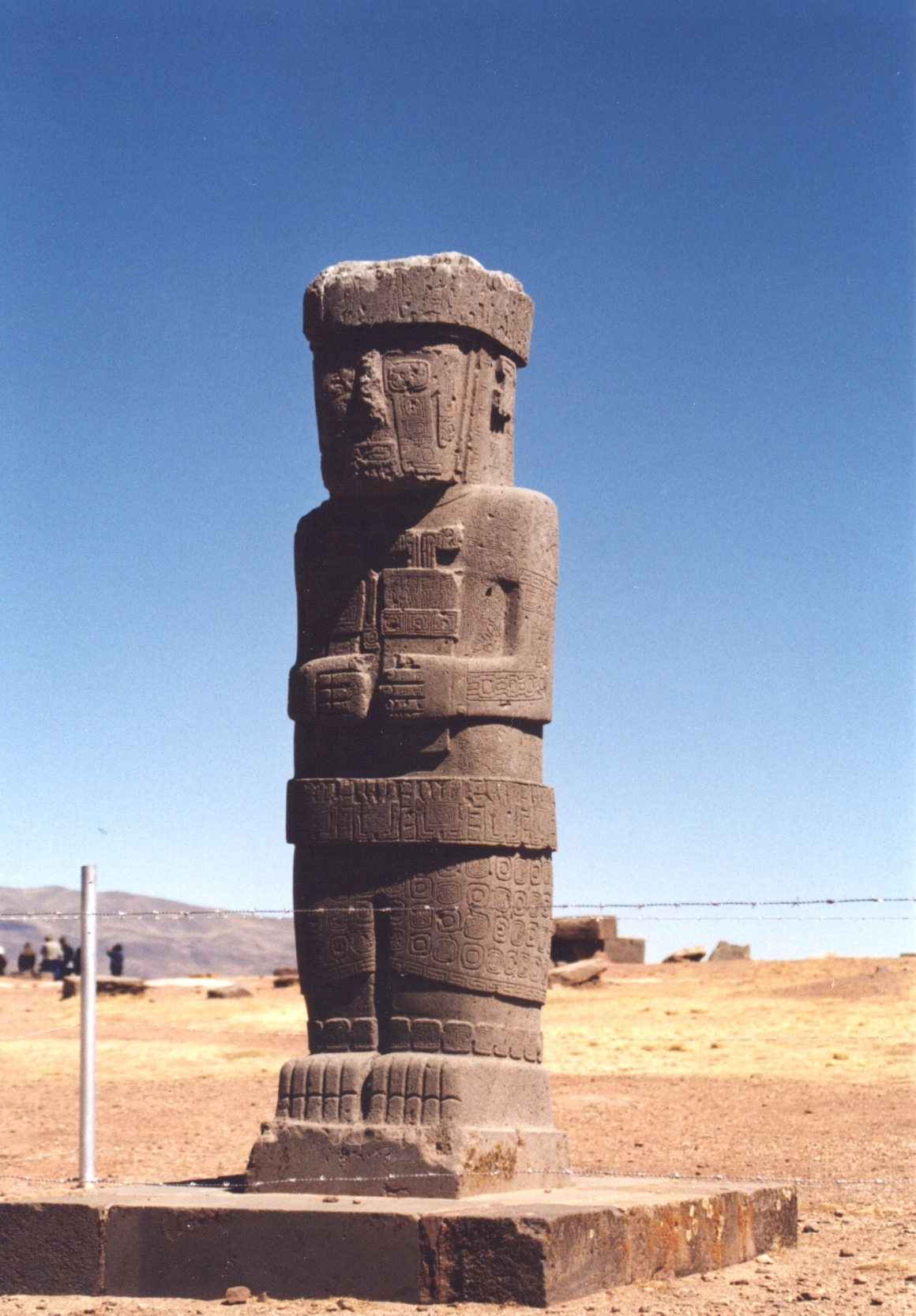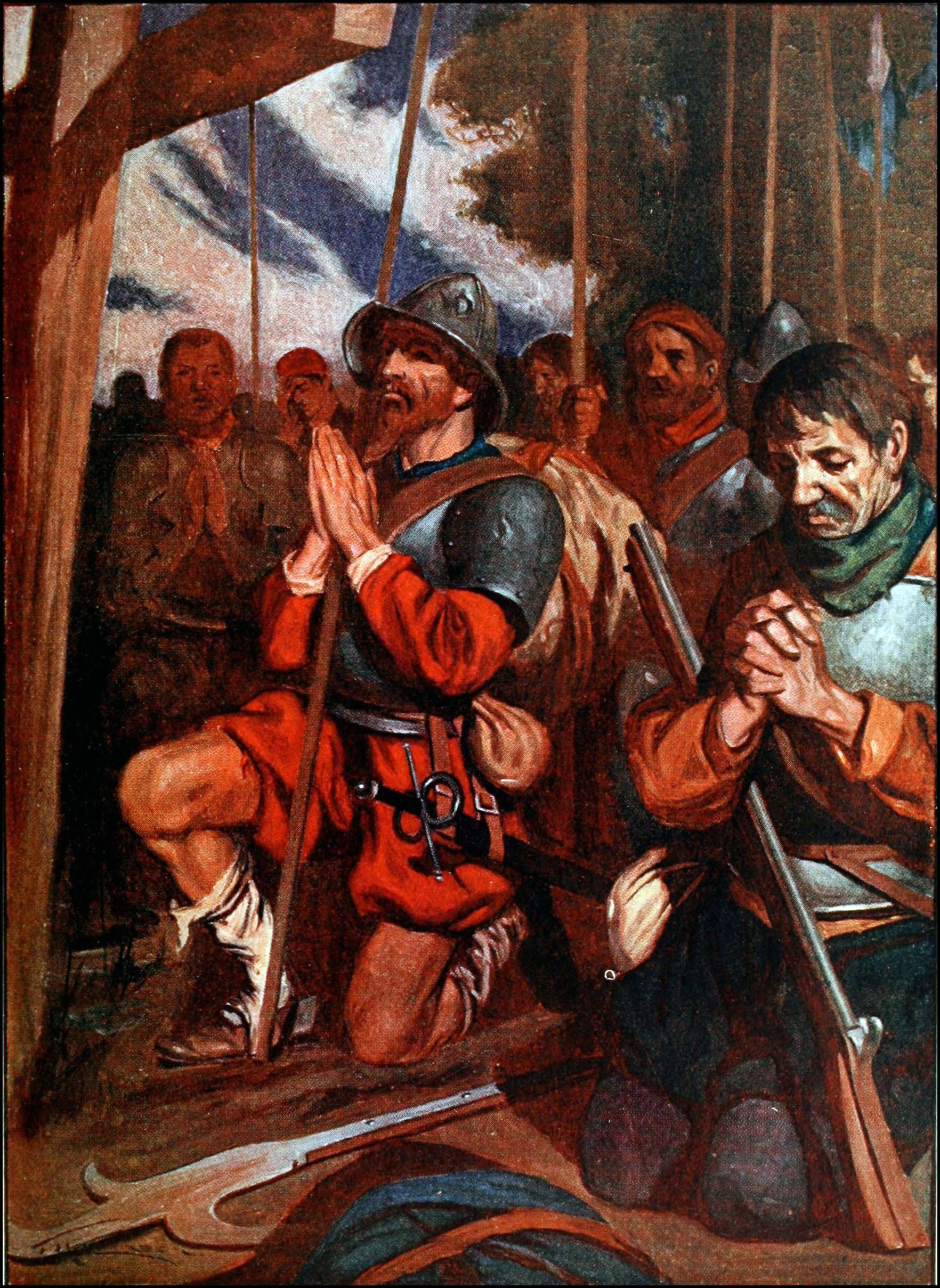|
Juan Arias Díaz
Juan Arias Díaz, also known as Juan Arias Diaz Topete, was a Spanish explorer and mineral prospector. He is credited with being the first European to visit the Incan city of Choquequirao, which he visited in 1710. However, it has been proposed that Spanish conquistadors Conquistadors (, ) or conquistadores (; ; ) were Spanish Empire, Spanish and Portuguese Empire, Portuguese colonizers who explored, traded with and colonized parts of the Americas, Africa, Oceania and Asia during the Age of Discovery. Sailing ... arrived first during their war against Manco Inca. He allegedly found the city when he was resting his mules after a prospecting trek. He described it as "an ancient town of heathen times" known to the natives as "The Cradle of Gold". He led three expeditions to the town, finding a total of four sites, the three others of which have not been identified. His records of Choquequirao inspired American explorer Hiram Bingham III to search for the city. References ... [...More Info...] [...Related Items...] OR: [Wikipedia] [Google] [Baidu] |
Incan
The Inca Empire, officially known as the Realm of the Four Parts (, ), was the largest empire in pre-Columbian America. The administrative, political, and military center of the empire was in the city of Cusco. The Inca civilisation rose from the Peruvian highlands sometime in the early 13th century. The Portuguese explorer Aleixo Garcia was the first European to reach the Inca Empire in 1524. Later, in 1532, the Spanish began the conquest of the Inca Empire, and by 1572 the last Inca state was fully conquered. From 1438 to 1533, the Incas incorporated a large portion of western South America, centered on the Andean Mountains, using conquest and peaceful assimilation, among other methods. At its largest, the empire joined modern-day Peru with what are now western Ecuador, western and south-central Bolivia, northwest Argentina, the southwesternmost tip of Colombia and a large portion of modern-day Chile, forming a state comparable to the historical empires of Eurasia. Its ... [...More Info...] [...Related Items...] OR: [Wikipedia] [Google] [Baidu] |
Choquequirao
Choquequirao (possibly from Quechua ''chuqi'' metal, ''k'iraw'' crib, cot) is an Incan site in southern Peru, similar in structure and architecture to Machu Picchu. The ruins are buildings and terraces at levels above and below Sunch'u Pata, the truncated hill top. The hilltop was anciently leveled and ringed with stones to create a 30 by 50 m platform. Choquequirao at an elevation of is in the spurs of the Vilcabamba mountain range in the Mollepata district, Anta province of the Cusco Region. The complex is 1,800 hectares, of which 30–40% is excavated. The site overlooks the Apurimac River canyon that has an elevation of . The site is reached by a two-day hike from outside Cusco.The Other Machu Picchuarticle on Choquequirao (''The New York Times'', June 3, 2007) *Jones, Paul. Exciting News about the Choquequirao Cable Car. Totally Latin America. S.A. Retrieved 7 December 2012. *Salazar, Carla. Tramway planned for Machu Picchu’s 'sister city'. AP Tr ... [...More Info...] [...Related Items...] OR: [Wikipedia] [Google] [Baidu] |
Conquistadors
Conquistadors (, ) or conquistadores (; ; ) were Spanish Empire, Spanish and Portuguese Empire, Portuguese colonizers who explored, traded with and colonized parts of the Americas, Africa, Oceania and Asia during the Age of Discovery. Sailing beyond the Iberian Peninsula, they established numerous Colony, colonies and trade routes, and brought much of the "New World" under the dominion of Spain and Portugal. After Christopher Columbus's arrival in the West Indies in 1492, the Spanish, usually led by Hidalgo (nobility), hidalgos from the west and south of Spain, began building a colonial empire in the Caribbean using colonies such as Captaincy General of Santo Domingo, Santo Domingo, Captaincy General of Cuba, Cuba, and Captaincy General of Puerto Rico, Puerto Rico as their main bases. From 1519 to 1521, Hernán Cortés led the Spanish conquest of the Aztec Empire, ruled by Moctezuma II. From the territories of the Aztec Empire, conquistadors expanded Spanish rule to northern Ce ... [...More Info...] [...Related Items...] OR: [Wikipedia] [Google] [Baidu] |
Manco Inca
Manco Inca Yupanqui (1544) was the founder and first Sapa Inca of the independent Neo-Inca State in Vilcabamba, Peru, Vilcabamba, although he was originally a Puppet government, puppet Inca Emperor installed by the Spaniards. He was also known as Manco II and Manco Cápac II. He was one of the sons of Huayna Cápac and a younger brother of Huáscar.Prescott, W.H., 2011, The History of the Conquest of Peru, digireads.com, Biography Origin and enthronement Manco Inca, one of the more than 50 sons of Huayna Capac, was born in Cusco, Cuzco. When Atahualpa's troops took the city under the command of General Quizquiz, they killed the descendants of Huayna Cápac, the Huascar supporters, and anyone who could try to take the place of the Inca. Because of this, Manco Inca was forced to flee, avoiding any contact with the atahualpists. On 14 November 1533, he met the conquistador Francisco Pizarro and his contingent, both Inca and Spanish. This and other events such as the massacre ... [...More Info...] [...Related Items...] OR: [Wikipedia] [Google] [Baidu] |
Hiram Bingham III
Hiram Bingham III (November 19, 1875 – June 6, 1956) was an American academic, explorer and politician. In 1911, he publicized the existence of the Inca citadel of Machu Picchu which he rediscovered with the guidance of local indigenous farmers. Later, Bingham served as the 69th Governor of Connecticut for a single day in 1925—the shortest term in history. He had been elected in 1924 as governor, but was also elected to the Senate and chose that position. He served as a member of the United States Senate until 1933. Early life and early academic career Bingham was born in Honolulu, Hawaii, the son of Clara Brewster and Hiram Bingham II (1831–1908), an early Protestant missionary to the Kingdom of Hawai'i. He was also the grandson of Hiram Bingham I (1789–1869) and Sybil Moseley Bingham (1792–1848), earlier missionaries. Through his mother's side he was a descendant of William Brewster, a Mayflower passenger. He attended O'ahu College, now known as Punahou School ... [...More Info...] [...Related Items...] OR: [Wikipedia] [Google] [Baidu] |
Inca Empire
The Inca Empire, officially known as the Realm of the Four Parts (, ), was the largest empire in pre-Columbian America. The administrative, political, and military center of the empire was in the city of Cusco. The History of the Incas, Inca civilisation rose from the Peruvian highlands sometime in the early 13th century. The Portuguese explorer Aleixo Garcia was the first European to reach the Inca Empire in 1524. Later, in 1532, the Spanish Empire, Spanish began the conquest of the Inca Empire, and by 1572 Neo-Inca State, the last Inca state was fully conquered. From 1438 to 1533, the Incas incorporated a large portion of western South America, centered on the Andes, Andean Mountains, using conquest and peaceful assimilation, among other methods. At its largest, the empire joined modern-day Peru with what are now western Ecuador, western and south-central Bolivia, northwest Argentina, the southwesternmost tip of Colombia and Incas in Central Chile, a large portion of modern- ... [...More Info...] [...Related Items...] OR: [Wikipedia] [Google] [Baidu] |
Spanish Conquistadors
Conquistadors (, ) or conquistadores (; ; ) were Spanish Empire, Spanish and Portuguese Empire, Portuguese colonizers who explored, traded with and colonized parts of the Americas, Africa, Oceania and Asia during the Age of Discovery. Sailing beyond the Iberian Peninsula, they established numerous Colony, colonies and trade routes, and brought much of the "New World" under the dominion of Spain and Portugal. After Christopher Columbus's arrival in the West Indies in 1492, the Spanish, usually led by Hidalgo (nobility), hidalgos from the west and south of Spain, began building a colonial empire in the Caribbean using colonies such as Captaincy General of Santo Domingo, Santo Domingo, Captaincy General of Cuba, Cuba, and Captaincy General of Puerto Rico, Puerto Rico as their main bases. From 1519 to 1521, Hernán Cortés led the Spanish conquest of the Aztec Empire, ruled by Moctezuma II. From the territories of the Aztec Empire, conquistadors expanded Spanish rule to northern Ce ... [...More Info...] [...Related Items...] OR: [Wikipedia] [Google] [Baidu] |
Gold Prospectors
Gold is a chemical element; it has chemical symbol Au (from Latin ) and atomic number 79. In its pure form, it is a bright, slightly orange-yellow, dense, soft, malleable, and ductile metal. Chemically, gold is a transition metal, a group 11 element, and one of the noble metals. It is one of the least reactive chemical elements, being the second-lowest in the reactivity series. It is solid under standard conditions. Gold often occurs in free elemental (native state), as nuggets or grains, in rocks, veins, and alluvial deposits. It occurs in a solid solution series with the native element silver (as in electrum), naturally alloyed with other metals like copper and palladium, and mineral inclusions such as within pyrite. Less commonly, it occurs in minerals as gold compounds, often with tellurium (gold tellurides). Gold is resistant to most acids, though it does dissolve in aqua regia (a mixture of nitric acid and hydrochloric acid), forming a soluble tetrachloroaurate anio ... [...More Info...] [...Related Items...] OR: [Wikipedia] [Google] [Baidu] |





